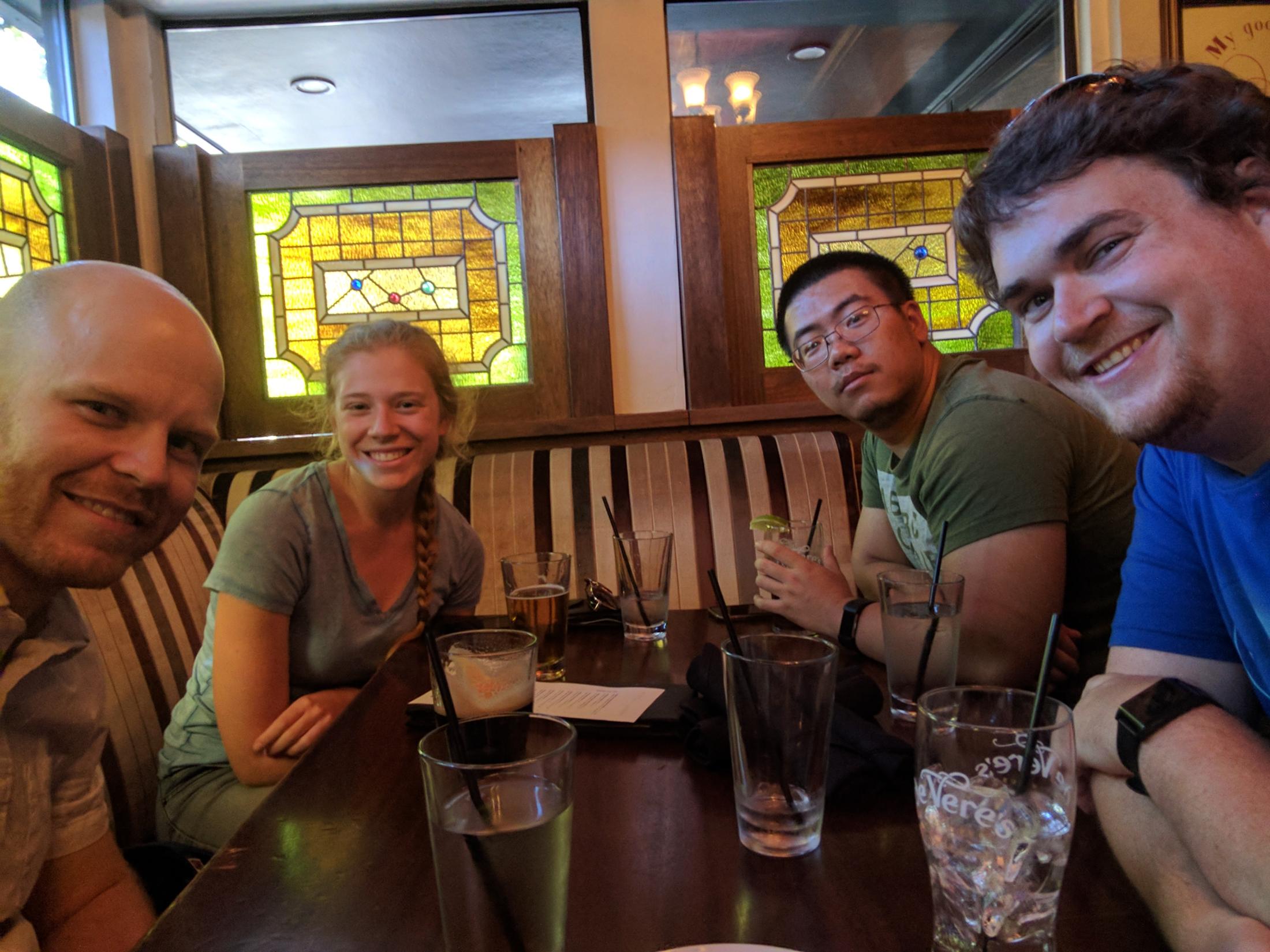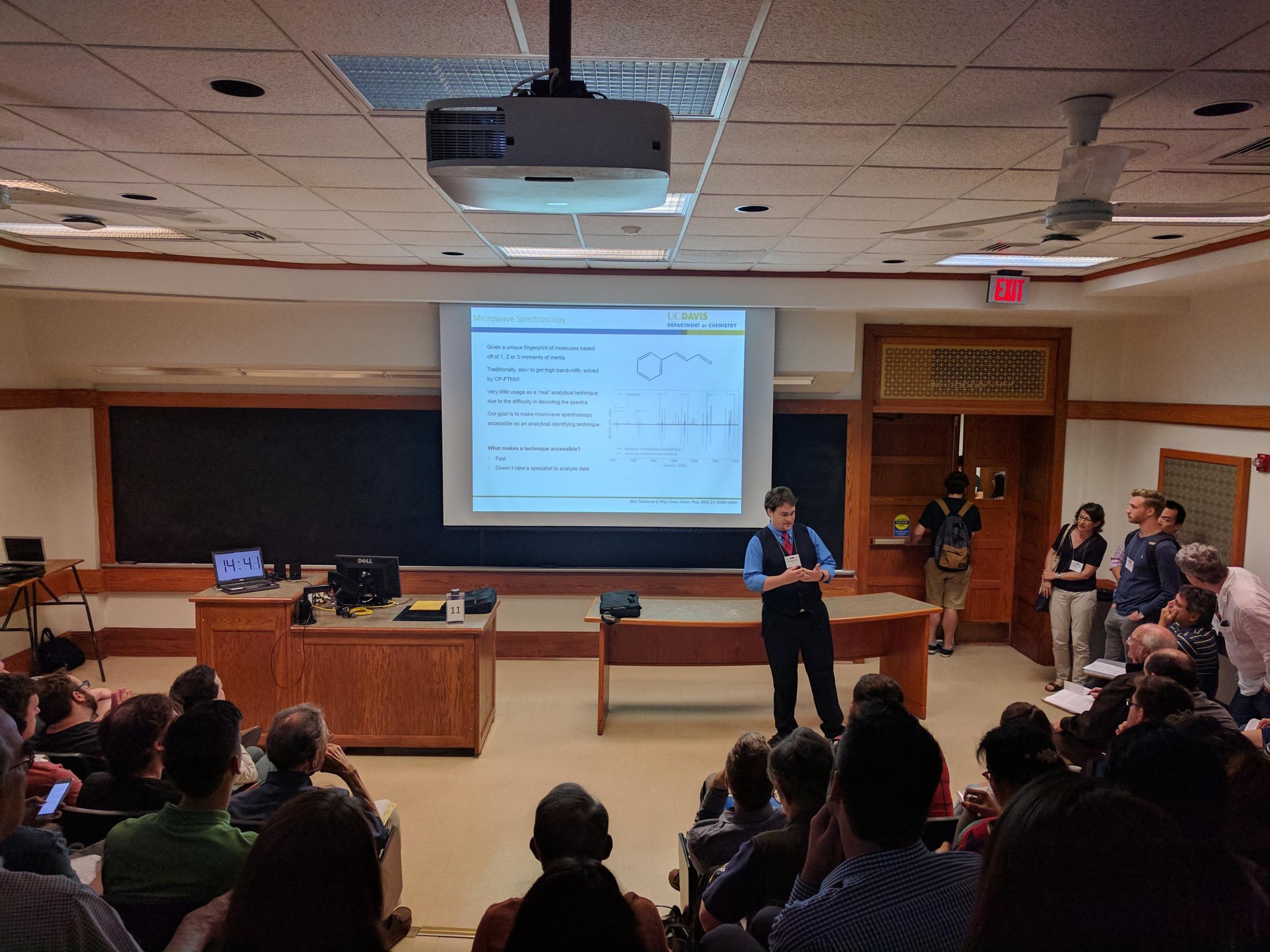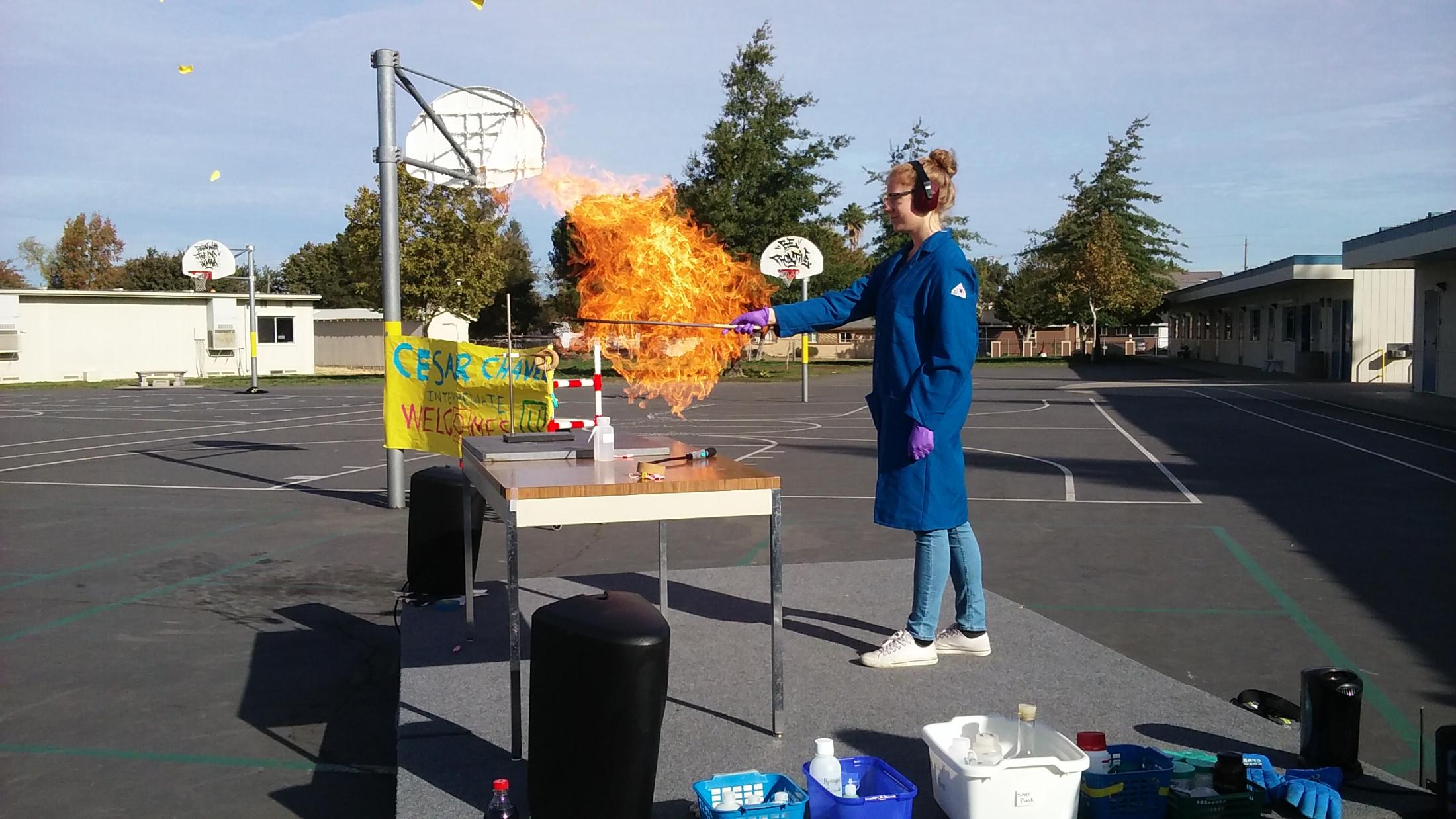Faculty Spotlight on Kyle Crabtree

Assistant professor Kyle Crabtree’s research is focused on applying state-of-the-art techniques in microwave spectroscopy to solve problems in astrochemistry and in analyical chemistry. His Ph.D. studies at the University of Illinois used infrared laser spectroscopy to study molecular ions important for astrochemistry, and as a CfA postdoctoral fellow at the Harvard–Smithsonian Center for Astrophysics, he used microwave spectroscopy to make the initial detections of several previously unknown molecules. His research group at UC Davis applies microwave spectroscopy to study kinetics of chemical reactions that occur in space, and explores new uses of microwave spectroscopy for automated chemical analysis. Professor Crabtree was named a 2016–2017 UC Davis Hellman Fellow.
Astrochemistry is the study of the chemical processes that occur in diverse regions of space. Powerful telescope facilities, such as the Hubble Space Telescope and the Atacama Large Millimeter Array, provide spectacular data about astronomical objects like interstellar clouds and protoplanetary disks, but challenging experimental work that simulates the extreme conditions of space is required in order to accurately interpret these observations. The Crabtree lab uses a technique called chirped-pulse Fourier Transform Microwave (CP-FTMW) spectroscopy together with supersonic molecular beam methods to study the rates of chemical reactions under space-like conditions. Using the rate data obtained from these experiments, computer modeling can be used to interpret telescope observations. Through this combination of laboratory experiments, computer techniques, and collaborations with astronomers, the Crabtree group aims to improve our understanding of the origin of life on Earth and to assess the prospects for the development of life elsewhere in the universe.

The same microwave technology that enables these astrochemical studies may also have important applications in analytical chemistry. Professor Crabtree has recently developed a new method called Automated Microwave Double Resonance (AMDOR) spectroscopy to enable automatic identification of molecules in complex mixtures, even if they have never been previously observed. AMDOR is a hands-off technique that uses microwaves to generate an effective 2D molecular barcode unique to the exact three-dimensional structure of each molecule in a sample, providing a powerful complement to existing analytical methods such as mass spectrometry and nuclear magnetic resonance spectroscopy. The Crabtree group is currently exploring machine-learning-based algorithms to automatically read and interpret these barcodes in order to speed up analysis and decrease sample consumption. If successful, AMDOR may be routinely used to characterize new molecules synthesized in chemical laboratories, as well as in forensic applications to identify new or unknown molecules that may be used as designer drugs or sports dopants.
As a fairly recent addition to the UC Davis chemistry department, the Crabtree Group has been hard at work constructing and testing the large instrumentation required for astrochemistry; they recorded their first molecular spectra in July, and further progress is actively underway. Meanwhile, the group has actively collaborated with astronomers and other experimental research groups. Graduate student Sommer Johansen has worked to interpret new observations 1 of the Diffuse Interstellar Bands, a nearly 100-year old astronomical mystery, and her work resulted in the group’s first publication in the Monthly Notices of the Royal Astronomical Society. The AMDOR machine-learning algorithm development is being led by graduate student Zachary Buchanan using microwave data acquired in conjunction with researchers at Harvard, Coker College, and the New College of Florida. Johansen and Buchanan presented their work at the International Symposium on Molecular Spectroscopy this past June. Finally, graduate student Zhongxing Xu has, in addition to designing laser systems for the astrochemistry work, performed quantum chemical calculations as preparation for an upcoming collaboration with Professor Cheuk-Yiu Ng on the ultraviolet photochemistry of astronomically important diatomic molecules.

Professor Crabtree serves as the chair of the Chemistry Department’s Educational Outreach Committee, and several of his students have been involved with these outreach efforts. Since becoming chair, one of Professor Crabtree’s goals has been to make outreach events, particularly demonstrations at local schools and Picnic Day, more educational without decreasing their entertainment value. In his two years as chair, the committee has put on over 40 outreach events that have reached nearly 10,000 people, including the department’s annual Picnic Day chemistry demonstrations. He was also the first speaker for the committee’s new adult outreach series, SCInema, which features a film screening accompanied by a scientific talk about the technology or themes of the film. In this inaugural event, Professor Crabtree discussed the “lasers” in the Star Wars universe to go with a showing of Star Wars: The Force Awakens.
